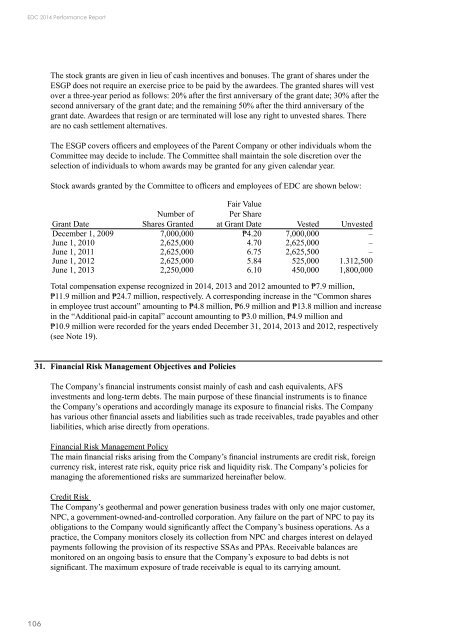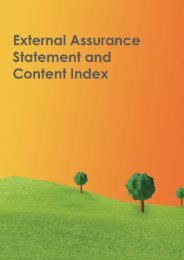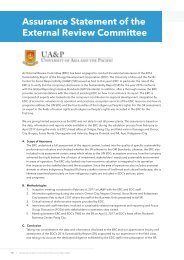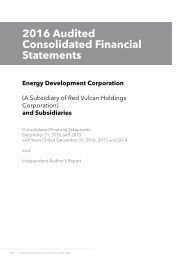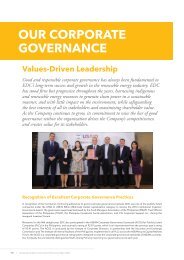2014 Financial Statement
You also want an ePaper? Increase the reach of your titles
YUMPU automatically turns print PDFs into web optimized ePapers that Google loves.
EDC <strong>2014</strong> Performance Report<br />
The stock grants are given in lieu of cash incentives and bonuses. The grant of shares under the<br />
ESGP does not require an exercise price to be paid by the awardees. The granted shares will vest<br />
over a three-year period as follows: 20% after the first anniversary of the grant date; 30% after the<br />
second anniversary of the grant date; and the remaining 50% after the third anniversary of the<br />
grant date. Awardees that resign or are terminated will lose any right to unvested shares. There<br />
are no cash settlement alternatives.<br />
The ESGP covers officers and employees of the Parent Company or other individuals whom the<br />
Committee may decide to include. The Committee shall maintain the sole discretion over the<br />
selection of individuals to whom awards may be granted for any given calendar year.<br />
Stock awards granted by the Committee to officers and employees of EDC are shown below:<br />
Fair Value<br />
Grant Date<br />
Number of<br />
Shares Granted<br />
Per Share<br />
at Grant Date Vested Unvested<br />
December 1, 2009 7,000,000 ₱4.20 7,000,000 –<br />
June 1, 2010 2,625,000 4.70 2,625,000 –<br />
June 1, 2011 2,625,000 6.75 2,625,500 –<br />
June 1, 2012 2,625,000 5.84 525,000 1.312,500<br />
June 1, 2013 2,250,000 6.10 450,000 1,800,000<br />
Total compensation expense recognized in <strong>2014</strong>, 2013 and 2012 amounted to ₱7.9 million,<br />
₱11.9 million and ₱24.7 million, respectively. A corresponding increase in the “Common shares<br />
in employee trust account” amounting to ₱4.8 million, ₱6.9 million and ₱13.8 million and increase<br />
in the “Additional paid-in capital” account amounting to ₱3.0 million, ₱4.9 million and<br />
₱10.9 million were recorded for the years ended December 31, <strong>2014</strong>, 2013 and 2012, respectively<br />
(see Note 19).<br />
31.<br />
<strong>Financial</strong> Risk Management Objectives and Policies<br />
The Company’s financial instruments consist mainly of cash and cash equivalents, AFS<br />
investments and long-term debts. The main purpose of these financial instruments is to finance<br />
the Company’s operations and accordingly manage its exposure to financial risks. The Company<br />
has various other financial assets and liabilities such as trade receivables, trade payables and other<br />
liabilities, which arise directly from operations.<br />
<strong>Financial</strong> Risk Management Policy<br />
The main financial risks arising from the Company’s financial instruments are credit risk, foreign<br />
currency risk, interest rate risk, equity price risk and liquidity risk. The Company’s policies for<br />
managing the aforementioned risks are summarized hereinafter below.<br />
Credit Risk<br />
The Company’s geothermal and power generation business trades with only one major customer,<br />
NPC, a government-owned-and-controlled corporation. Any failure on the part of NPC to pay its<br />
obligations to the Company would significantly affect the Company’s business operations. As a<br />
practice, the Company monitors closely its collection from NPC and charges interest on delayed<br />
payments following the provision of its respective SSAs and PPAs. Receivable balances are<br />
monitored on an ongoing basis to ensure that the Company’s exposure to bad debts is not<br />
significant. The maximum exposure of trade receivable is equal to its carrying amount.<br />
106


